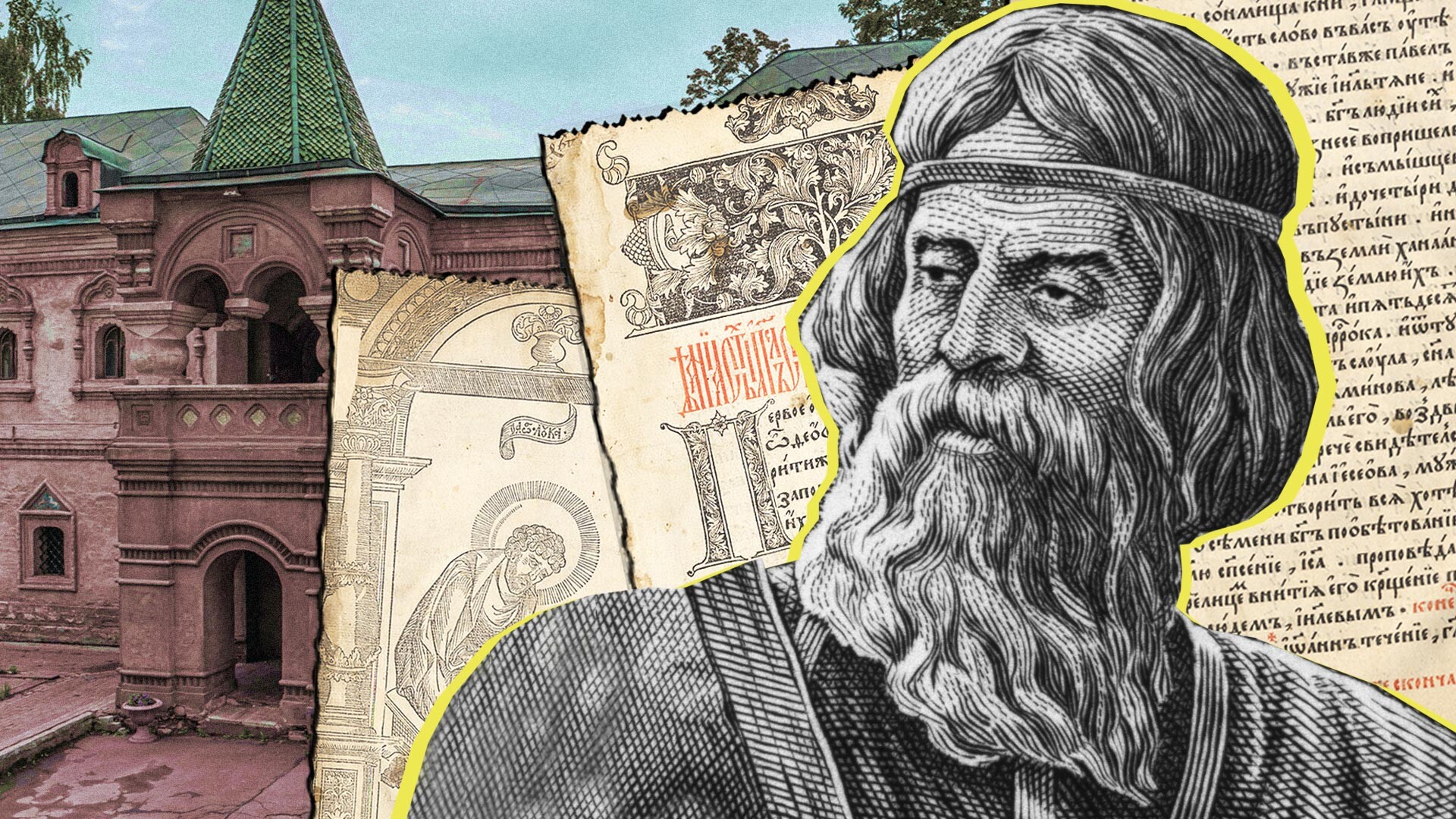
In the middle of the 15th century, when printing presses first appeared in Europe, interest in reading and book collecting began to grow in Russia. For about another 100 years after the Gutenberg Bible (1450s), however, no attempts at book printing were made in the Tsardom of Muscovy. Bibliographer Vasily Rumyantsev attributes this to the "extraordinary development of manuscript activity" and the excessive diligence of Russians in copying books. A huge number of scribes did this for a living.
Some printed Russian books existed - they were published in foreign (particularly German and Polish) printing houses from as early as the beginning of the 16th century and sold to Russians.
Most of the books were sacred texts for liturgical services. However, handwritten manuscripts contained many inaccuracies - most often through the fault of the scribes. At the time, Tsar Ivan the Terrible had initiated the construction of a large number of new churches and monasteries, and all of them needed their own liturgical books - which had to be identical canonical versions.
Book printing was supposed to help spread “enlightenment” to the new Russian lands, including the Khanate of Kazan, which Ivan the Terrible had recently seized.
At the invitation of the Russian Tsar, Hans Messingheim, a Dane, arrived in Moscow. Ivan Fyodorov, a deacon in one of the Kremlin churches (no longer in existence) was assigned to him as an apprentice, along with Pyotr Mstislavets and engraver Vasyuk Nikiforov as assistants. (Nikiforov probably executed the letters and made the engravings.) A printing press was ordered from Poland, where Russian books had already been published before.
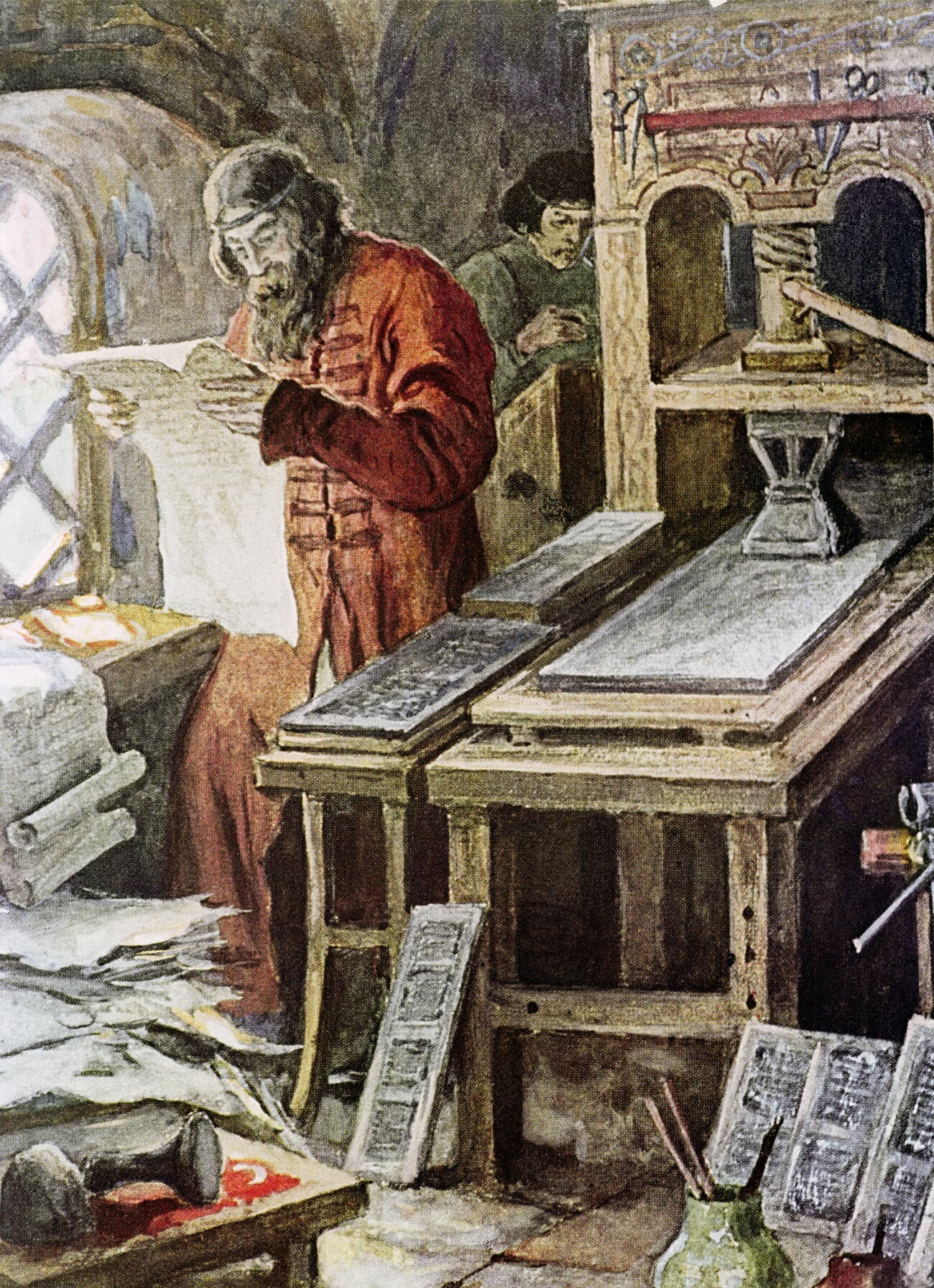
"First Printer Ivan Fyodorov in his Workshop". A reproduction from the album "Moscow and Muscovites", the State Historical Museum.
Valentin Cheredintsev/SputnikBy 1553, they had already started to print books anonymously, and most likely Hans Messingheim himself directed the process. However, the first printed book in Russia is considered to be the Apostolos of 1564 - it was precisely dated and signed by the publisher, Ivan Fyodorov. It contains the New Testament Acts of the Apostles, the Epistles of James, Peter, John and Paul, and the Book of Revelation. It is believed that about 2,000 copies were printed, and just under 100 known copies have survived to this day.
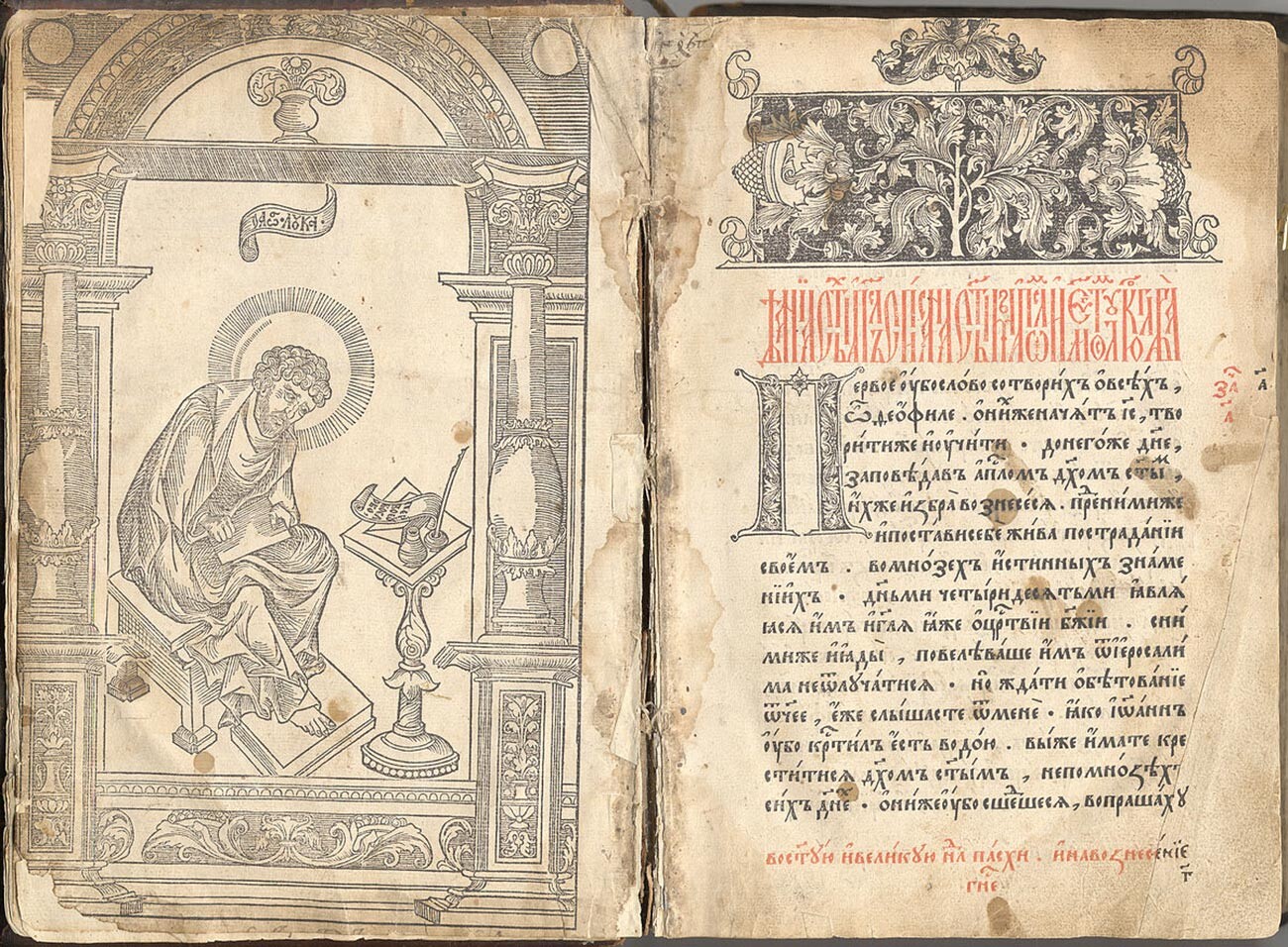
Front page of the first ever printed Russian book, Apostolos of 1564
Public domainBibliophiles have admired the quality of this first printed book, in particular, the thin strokes, the regular size of the letters and the fact that they are arranged in straight lines and the distances between the letters and the lines are constant and uniform throughout. Moreover, the font imitates handwriting and is tilted slightly to the right.
The book also has an afterword by Ivan Fyodorov, where he tells how Tsar Ivan Vasilyevich [Ivan the Terrible], with the blessing of Metropolitan Macarius, ordered him to find craftsmen and erect a building for printing, and that the Tsar spared no gold from his treasury for it.
However, book scribes were strongly opposed to printers, believing they were taking away their livelihoods. Arsonists even set fire to the "print yard", as the printing house was known.
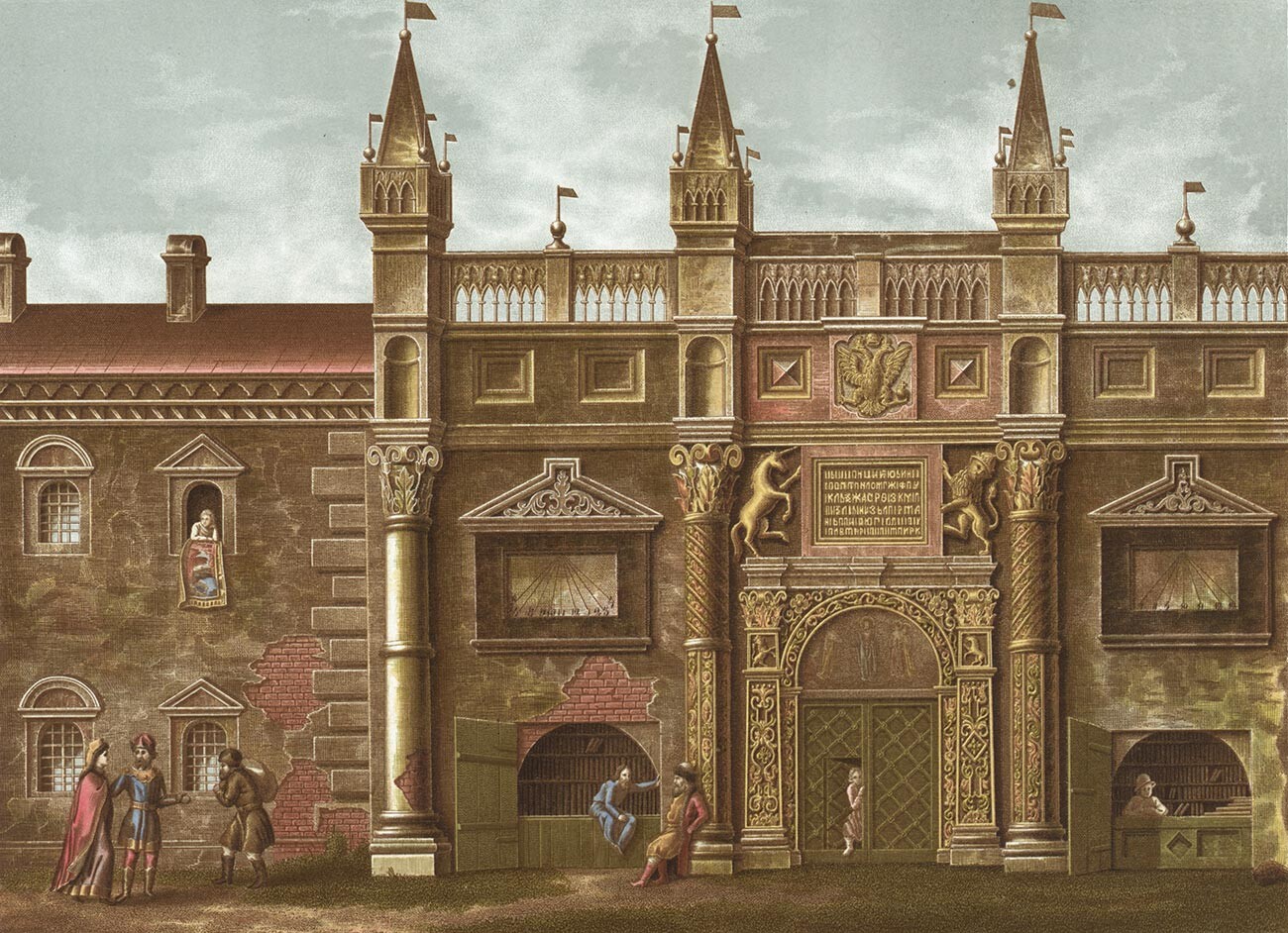
Fyodor Solntsev. Moscow Print Yard. From the Antiquities of the Russian State, 1849-1853.
Fine Art Images/Heritage Images via Getty ImagesThe 16th century English diplomat Giles Fletcher claimed in his "Of the Russe Common Wealth" that senior church officials were behind the grievances and the arson attack. He wrote that they were opponents of extending enlightenment, "as [if] fearing to have their ignorance and ungodliness discovered". Fyodorov himself indirectly confirmed this: He wrote later of the hounding to which the "righteous" trade of printing had been subjected, explaining it in terms of common envy on the part of certain "church leaders".
In 1568 the Tsar ordered the resumption of book printing in Moscow - Andronik Nevezha, a pupil of Ivan Fyodorov's, began work in the new printing yard. Ivan the Terrible established another printing press at his Alexandrovskaya Sloboda estate. The publishing of printed books expanded, but right up to the beginning of the 18th century and the reign of Peter the Great only religious texts were published.
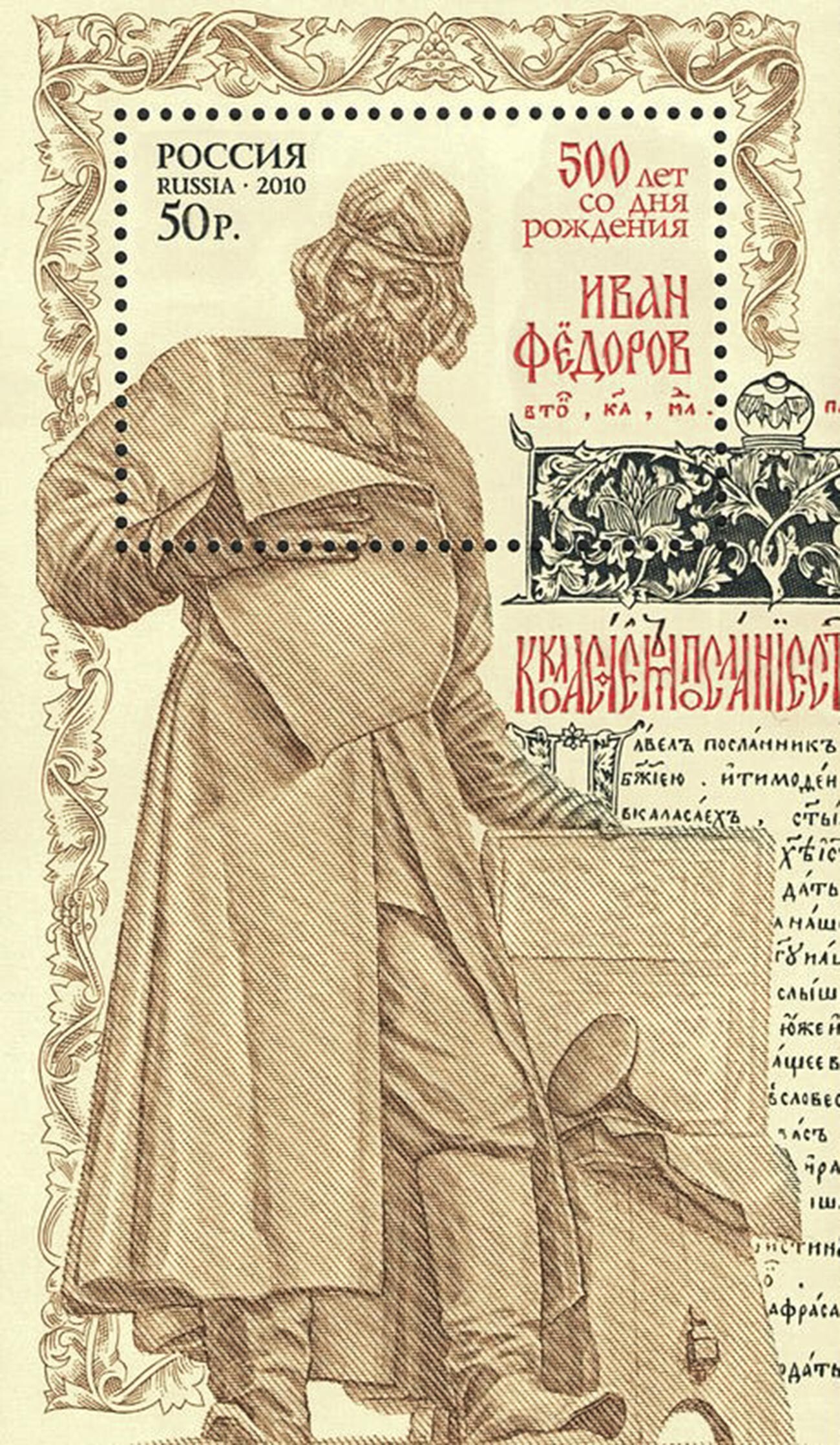
A postcard marking the 500th anniversary of the alleged birth of Ivan Fedorov, 2010
Public domainAfter the arson attack, Fyodorov himself was forced to flee to the Grand Duchy of Lithuania. He managed to take printing equipment, sets of type and engraving plates with him. Some historians have put forward theories that Fyodorov's departure was ordered by Ivan the Terrible as he wanted to establish good relations with wealthy Lithuanian adherents of the Orthodox faith by sending them the master printer.
With funding from the Lithuanian Hetman, Fyodorov founded a Cyrillic printing press in the town of Zabłudów (now in Poland), and in the 1570s established a printing house in Lwów (today Lviv, in Ukraine), the capital of the Ruthenian Voivodeship within the Polish-Lithuanian Commonwealth. There, Fyodorov published another edition of the Apostolos (1574), with an extensive epilog in which he described his work as a printer and recounted how he had been hounded.
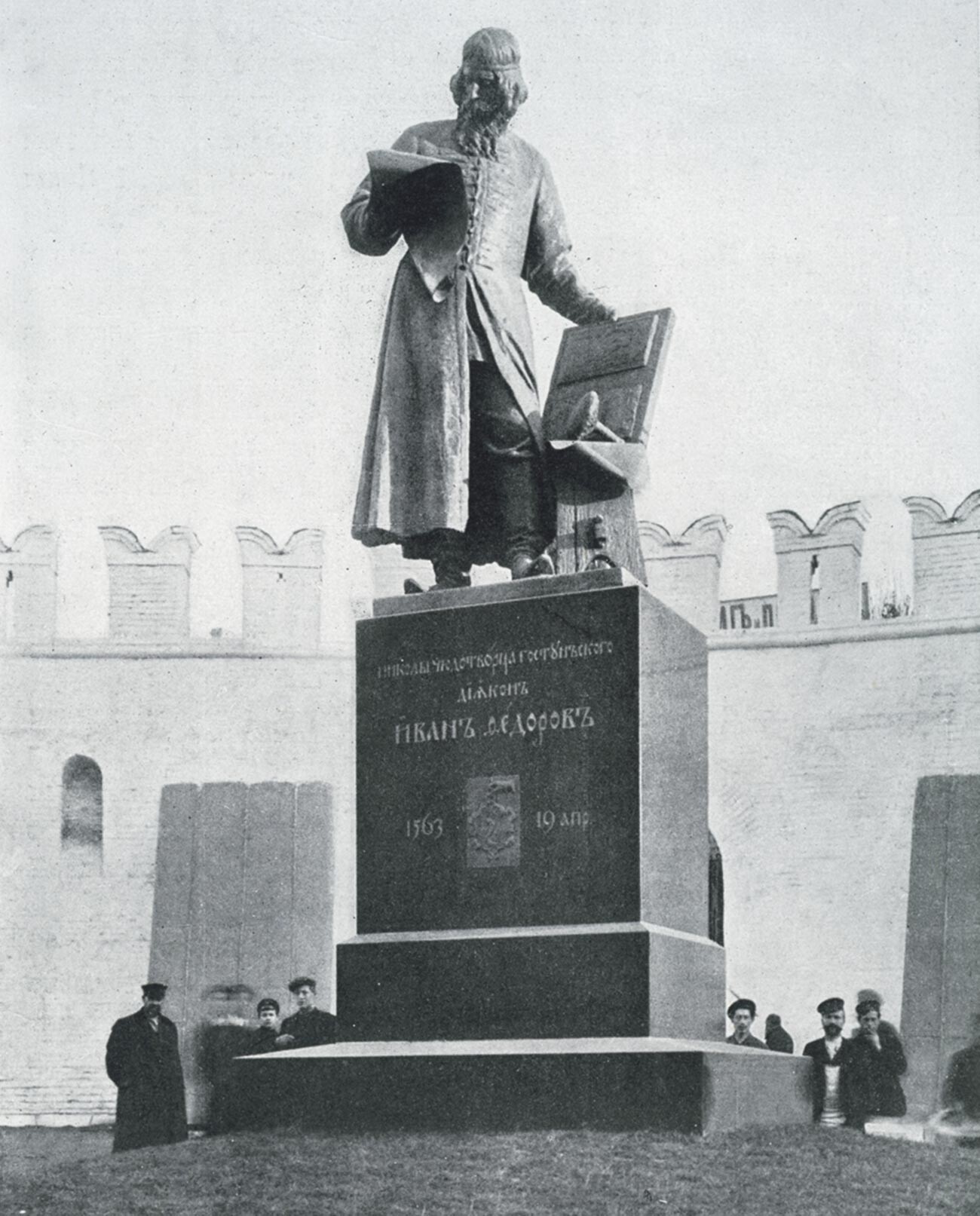
A monument to Ivan Fedorov in Moscow, 1910-1912
Public domainIf using any of Russia Beyond's content, partly or in full, always provide an active hyperlink to the original material.
Subscribe
to our newsletter!
Get the week's best stories straight to your inbox